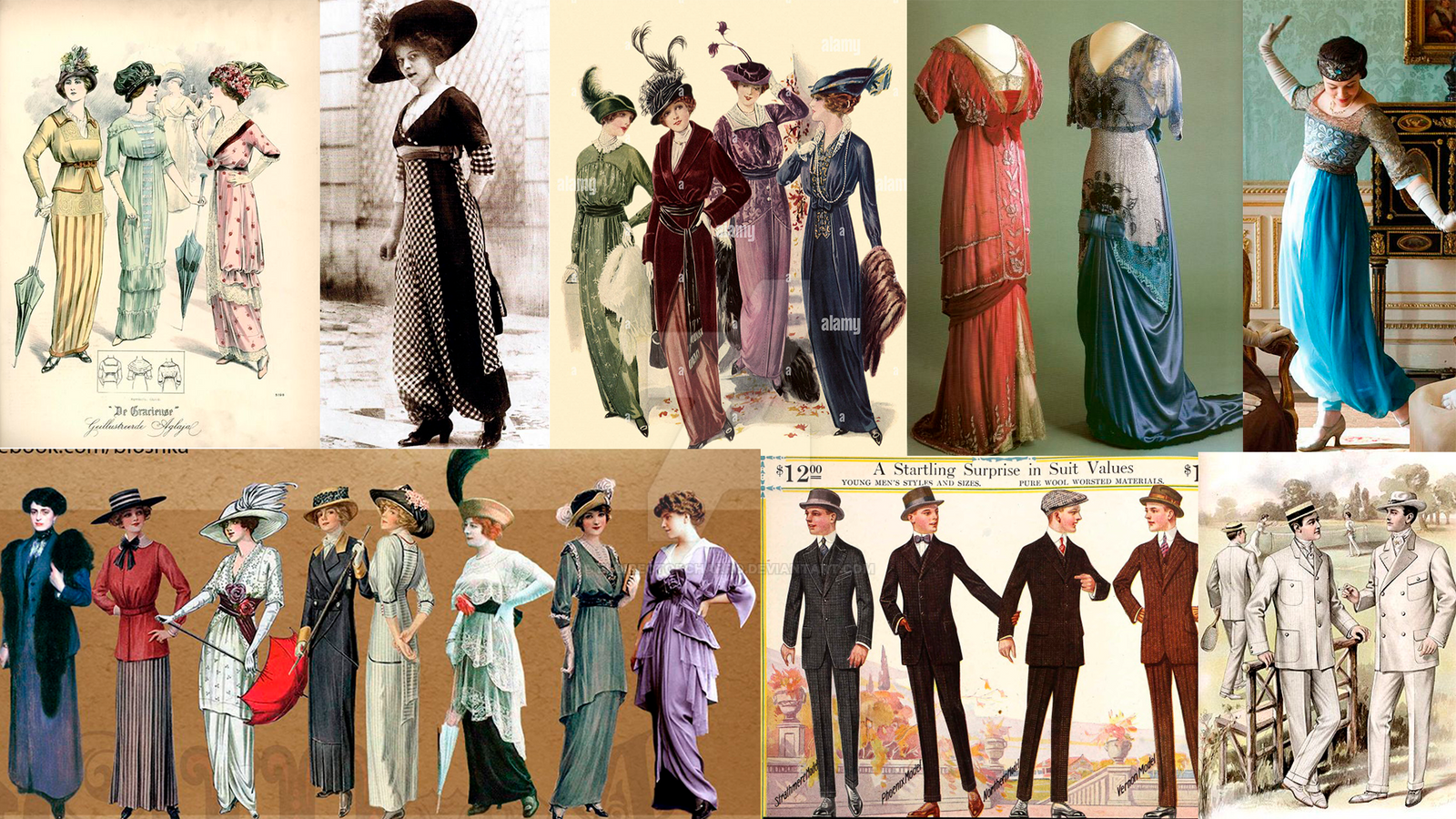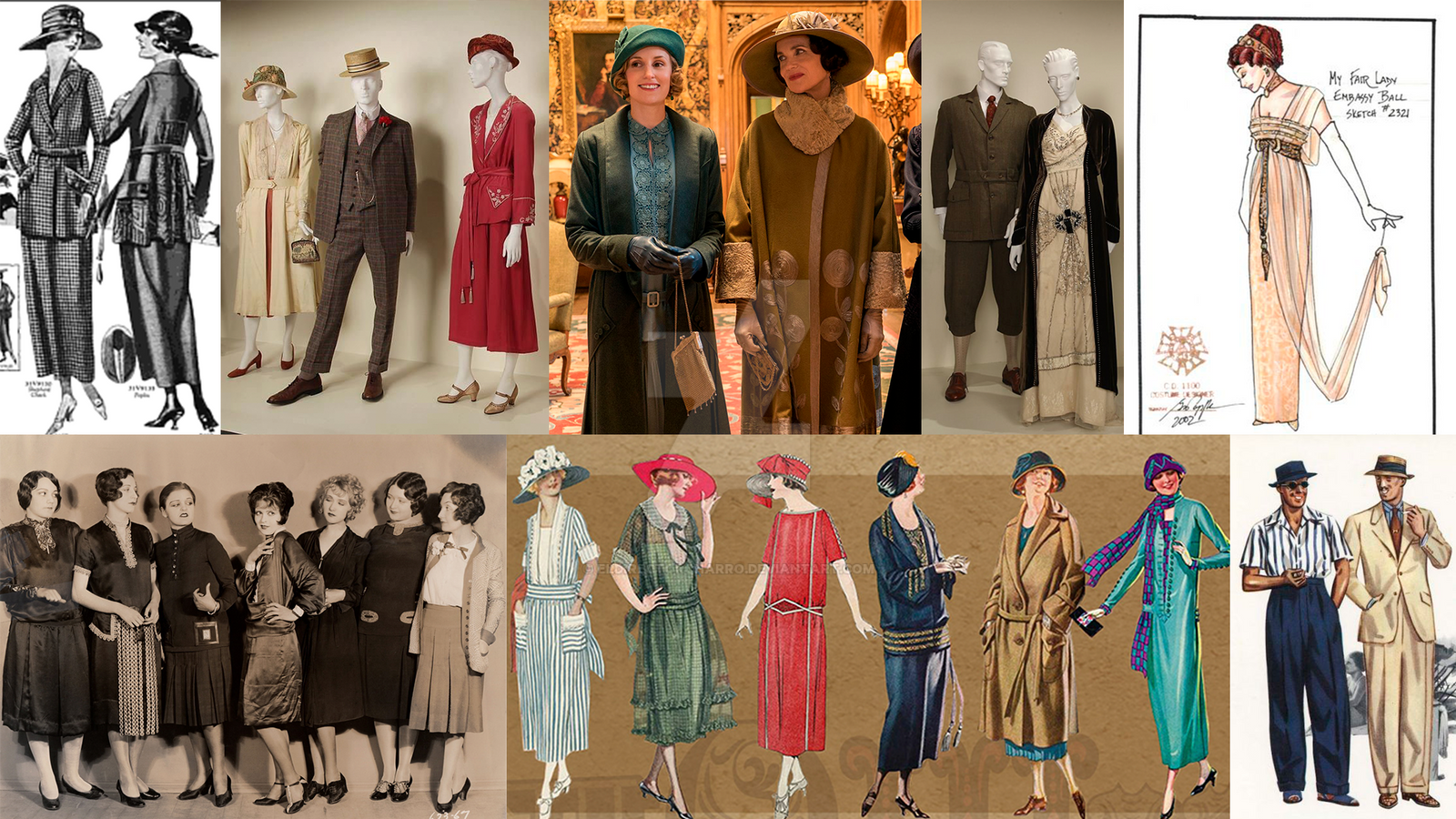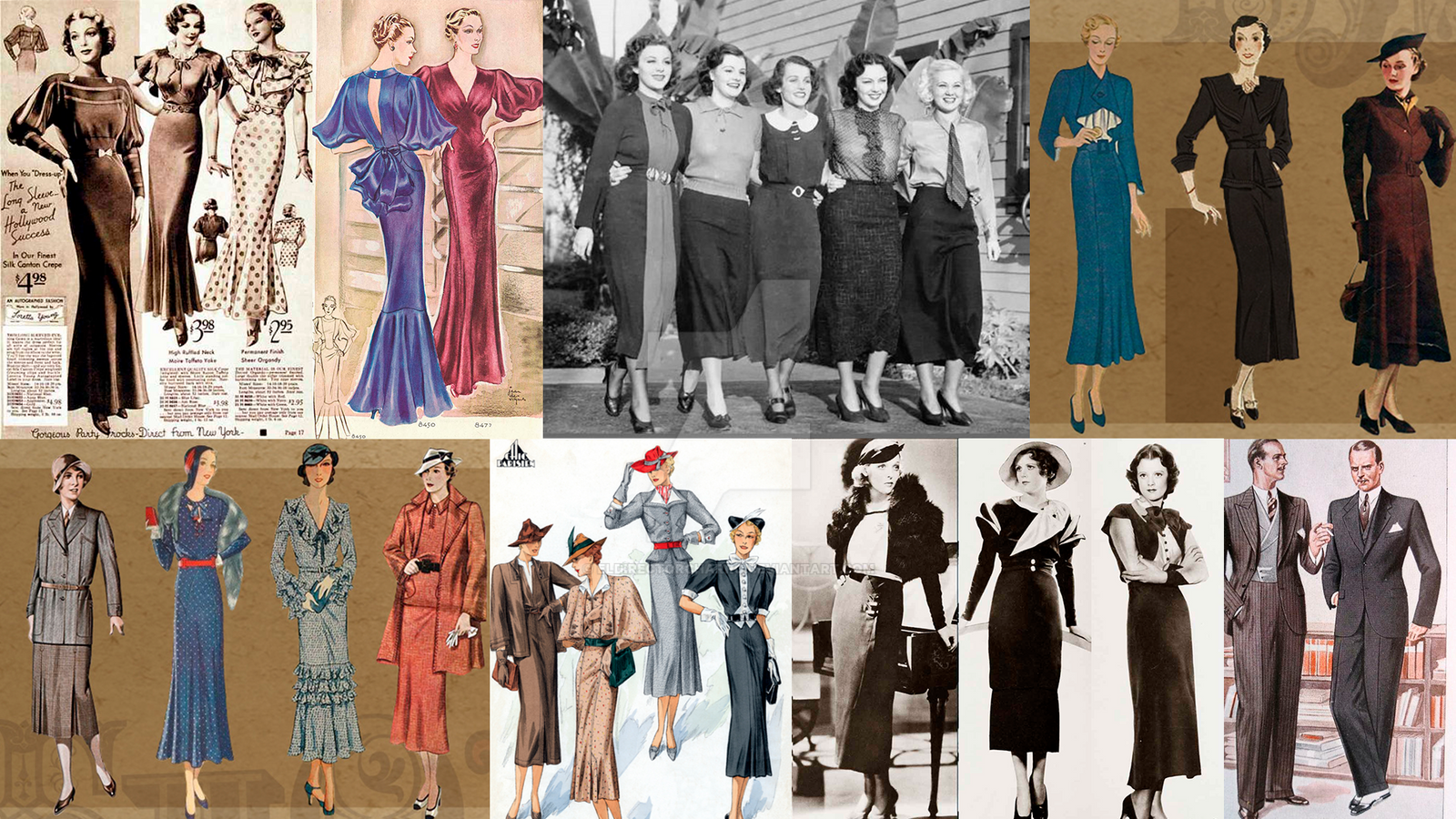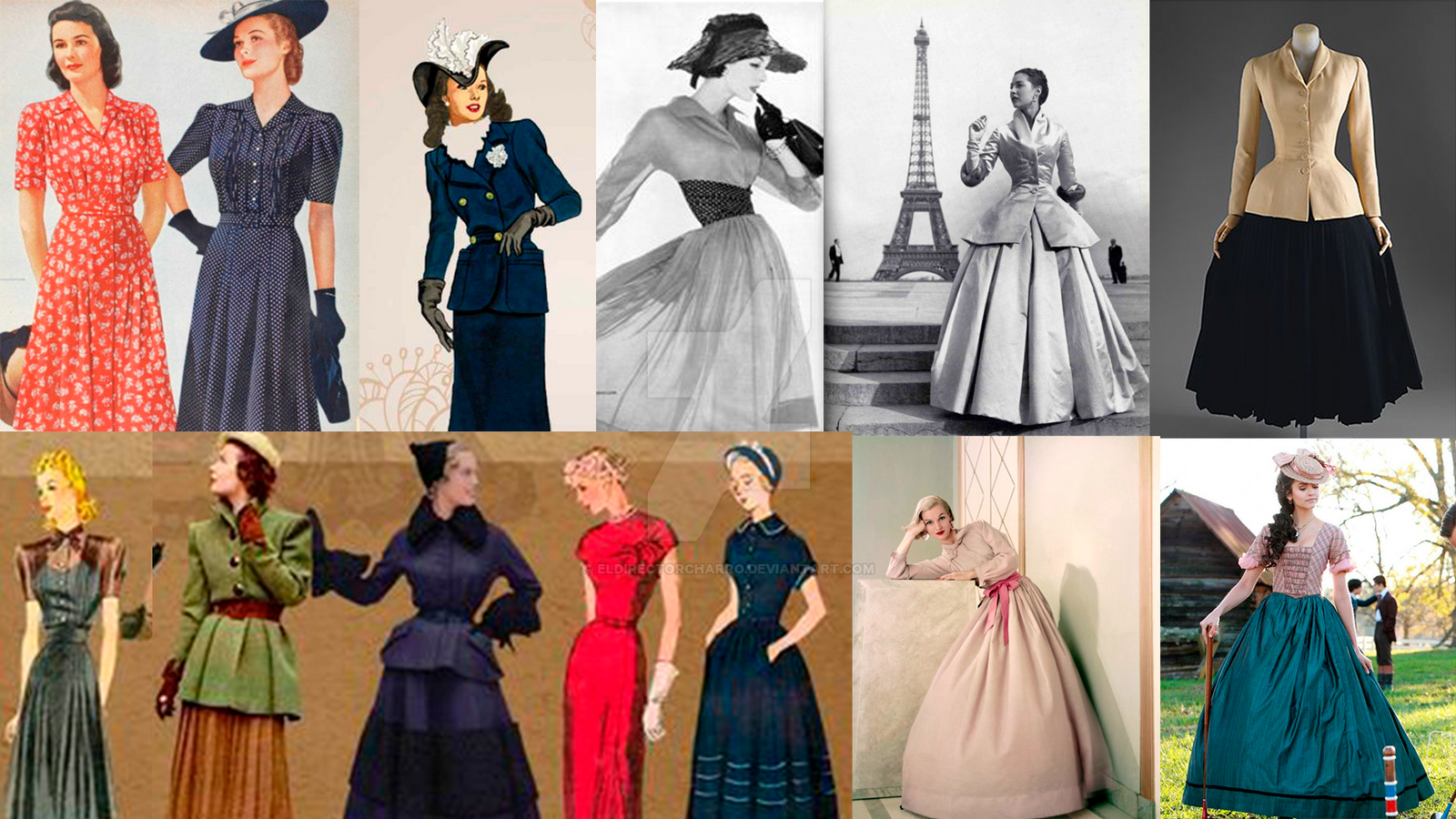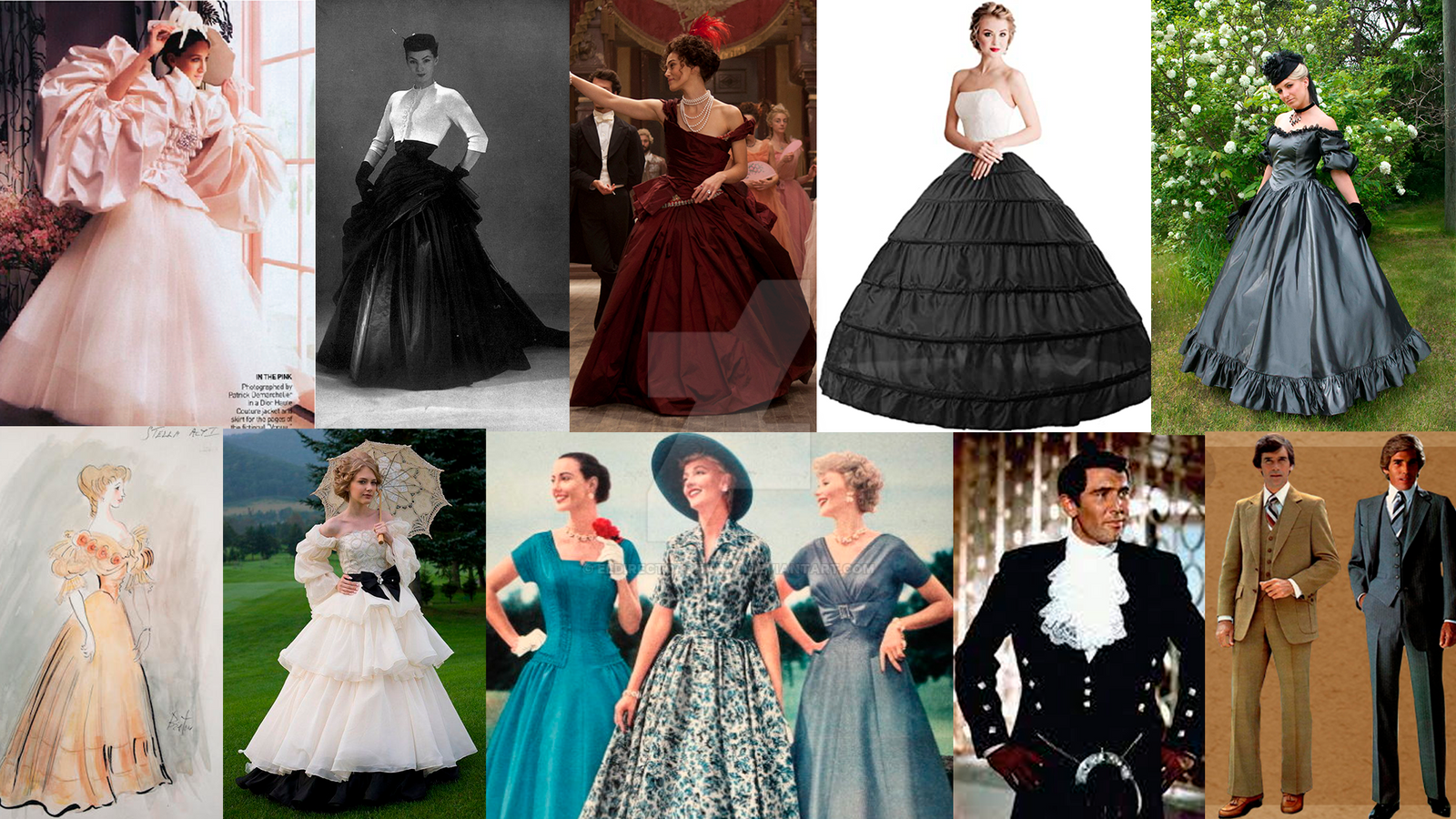Continuing with the fashion posts, I might polish these further. But I think it should give a better idea upto the 1950s.
The 1910s
Known as the Titanic Style, the 1910s were characterized by opulence and – particularly in the latter half of the decade – experimentation. As the decade progressed styles of the Edwardian Era and Belle Époque gained a flowing look characterized by multiple layers. The strict S-shape silhouette of the previous century, slowly faded out in preference of long narrow tunics and the slow return of the Empire waist.
Note: that the austerity and practicality brought forth by WWI doesn’t happen here. So the multi layered opulent styles of the 1910s continue through the decade. Women, who remain also out of the factories, don’t adopts pants as much as in OTL, even though pantaloons still happen.
1920s
The Empire waist returns along with a simplification is women’s fashion. As the decade progressed women’s clothing evolved into more practical styles. The Empire silhouette and a “Regency Revival” took hold and shoes finally became visible as hemlines were raised above the ankle. For men, the slim cuts of the 1910s were dropped for a more relaxed cut, while the waists and waistcoats were no longer mandatory.
Note: without WWI the 1920s are not as radical nor as deep a break as OTL. There is a bit of a minimalist trend in most dress codes, but it is more of a reaction against the opulence of the previous decade than a revolution of societal norms. Flapper/jazz dresses and the androgynous lean styles of OTL are completely out of the picture. For men this means that the wide and loose “zoot suit” or gangster style is actually adopted earlier and much more widely. We generally associate this style with the 20s in OTL, but in reality, men’s suits remained slim throughout the 20s, and the wider style was not widely adopted until the 30s.
1930s
The early 1930s began by tightening the loose silhouette of the 1920s and some of the more opulent flairs of the 1910s came back in style. However, the Great Depression in 1934 and the outbreak of the influenza pandemic in 1930 brought forth a profound effect on society and culture as a whole. Fashion houses were forced to reduce prices and as such designers turned to cheaper fabrics and ready-made patterns. Thus everyday fashion became both practical and affordable at the same time. And by the end of the decade fashion houses began placing their signature styles into everyday looks.
Note: we continue with the trends of TTL with some of the cost cutting measures from OTL, which were also implemented during the depression and WWII in OTL.
1940s
The decade opened with a continuation of the practical styles of the 1930s, while designer styles could increasingly be seen in everyday wear. More decorations began to appear in dresses and styles became increasingly flamboyant.
As the economy recovered a new emergent middle class began adopting “fantasy” styles nostalgic for the previous century. This culminated in 1947 when Christian Dior presented the “New Look” and took the world by storm as the narrow waist and the corset silhouette made a daring comeback over the next decade and a half.
Note: Here is where we start getting funky. TTL’s 1940s look a bit more like OTLs 1950s, especially in women’s formal fashion. Formal wear and haute-couture cuts are also creeping into everyday wear for a growing middle class. In OTL the “New Look” in 1947 was the pinnacle of such designs here it is the beginning of truly crazy styles.
1950s
“The Crazy 50s” were all about extravagance corseted waists, crinolines, and wide skirts and petticoats became all the rage. Tailored looks became prized in a race between the aristocracy – who became desperate to remain relevant in the world – and a growing middle and commercial class trying to keep up and one-up each other through faux-bespoke looks. Formal and eveningwear once again became increasingly differentiated from everyday looks.
The craziness was not limited to women, as men’s fashion also became increasingly opulent as waistcoats, ruffled collars and wrists made a comeback.
Note: take the worst of OTL’s 50s and 70s, give it some belle-époque aristocratic nostalgia and you might end up with something close to TTLs 1950s.



